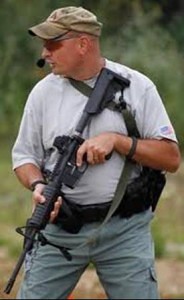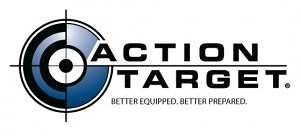
Kyle Bateman and Addison Sovine of Action Target, Inc. are among a handful of entrepreneurs to be named finalists in the Utah region, which includes Wyoming and half of Idaho. These local businessmen were selected from more than 1,700 applicants because of their significant impact on their surrounding business community.
“It is an honor,” stated Sovine. “There are so many great companies in this area and I am grateful to be listed among them.”
But being a successful entrepreneur in today’s economy does not come easy. “It has required a lot more work than I might have imagined early on,” said Bateman. “It is hard to comprehend how many things there are to do and how much work you will have to put into your business to make it successful. Having said that, I am still amazed that things have worked out as well as they have.”
Sovine and Addison founded Action Target out of an auto body shop in 1985. Their business idea was created atop the hood of a police vehicle, followed by their tireless work and hours to bring their ideas to the country. Since that time, Action Target has become the industry leader in shooting range design and Portable Steel Targets.
Sovine and Addison are in the running with 32 other finalists for this year’s top honored award. Ernst and Young developed the Entrepreneur of the Year Award program to celebrate successful entrepreneurs. It has grown into an award program that spans more than 140 cities in 50 countries. This year’s Utah region winners region will go on to compete against winners from other regions around the country, and subsequently the world. Utah Region winners will be announced on June 7, 2012.
Action Target Media Contact:
Sheryle Coray
sheryle.coray@818group.com
About Action Target Inc.
Based in Provo, Utah, Action Target is the leading manufacturer of custom shooting ranges and portable steel targets for military, law enforcement, Special Forces groups, tactical training schools, and commercial applications. Since its founding in 1985, Action Target has become the world’s largest shooting range equipment manager.







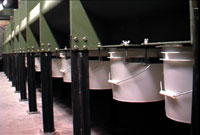 Time is money. The more time the range is shut down for service, the less money the range is making. In other words, each time a range has to shut down should be viewed as a potential loss of revenue. A range using a conveyor belt doesn’t have to shut down in order to service the trap because the conveyor is constantly collecting the fired rounds. When the range does shuts down for general maintenance, the workers don’t have to deal with clearing buckets and can better spend their time elsewhere.
Time is money. The more time the range is shut down for service, the less money the range is making. In other words, each time a range has to shut down should be viewed as a potential loss of revenue. A range using a conveyor belt doesn’t have to shut down in order to service the trap because the conveyor is constantly collecting the fired rounds. When the range does shuts down for general maintenance, the workers don’t have to deal with clearing buckets and can better spend their time elsewhere.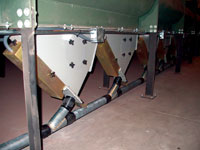 Contrarily, a
Contrarily, a 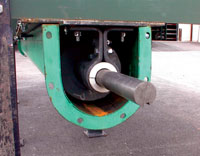 A final reason why the conveyor system is recommended in Total Containment Traps is safety. If a canister is allowed to overfill, the rounds will remain in the bullet trap and can potentially cause ricochet and/or clogging. Barrels can become filled with lead in as little as two weeks. The more the lead piles up, the bigger the safety issue. Range safety is critical and the screw conveyor system is the best choice for optimal safety.
A final reason why the conveyor system is recommended in Total Containment Traps is safety. If a canister is allowed to overfill, the rounds will remain in the bullet trap and can potentially cause ricochet and/or clogging. Barrels can become filled with lead in as little as two weeks. The more the lead piles up, the bigger the safety issue. Range safety is critical and the screw conveyor system is the best choice for optimal safety.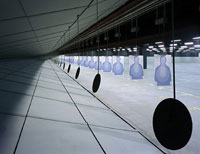 The Total Containment Trap is the dominant industry standard for modern, heavy-duty, steel bullet traps. It is the superior choice for ranges where safety, reliability, simple maintenance, and ease of use are top priorities. The TCT can be used both indoors and outdoors in all types of
The Total Containment Trap is the dominant industry standard for modern, heavy-duty, steel bullet traps. It is the superior choice for ranges where safety, reliability, simple maintenance, and ease of use are top priorities. The TCT can be used both indoors and outdoors in all types of 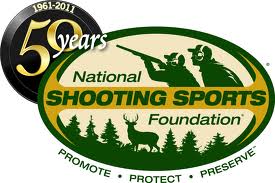 Recognizing the growing urbanization of America, NSSF first sought to build public awareness of the sportsman’s role in conservation and their contributions to wildlife management through landmark efforts such as the annual
Recognizing the growing urbanization of America, NSSF first sought to build public awareness of the sportsman’s role in conservation and their contributions to wildlife management through landmark efforts such as the annual 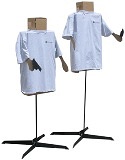 bounce, spin, rock, wobble, explode, fall, or give some other visual indicator when hit. High contrast paint on a shooting surface will increase visual feedback, but paint must be reapplied frequently. Paint can also be used to reduce visibility if desired.
bounce, spin, rock, wobble, explode, fall, or give some other visual indicator when hit. High contrast paint on a shooting surface will increase visual feedback, but paint must be reapplied frequently. Paint can also be used to reduce visibility if desired.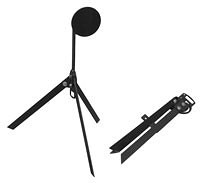 In addition to providing effective visible and audible indicators when hit, steel targets greatly enhance the steel efficiency of your training as well. Instead of changing out paper or cardboard targets, you can spend more time actually shooting. The 30 or so minutes you save each day really add up over the course of a year, especially if you are working with a large department.
In addition to providing effective visible and audible indicators when hit, steel targets greatly enhance the steel efficiency of your training as well. Instead of changing out paper or cardboard targets, you can spend more time actually shooting. The 30 or so minutes you save each day really add up over the course of a year, especially if you are working with a large department.